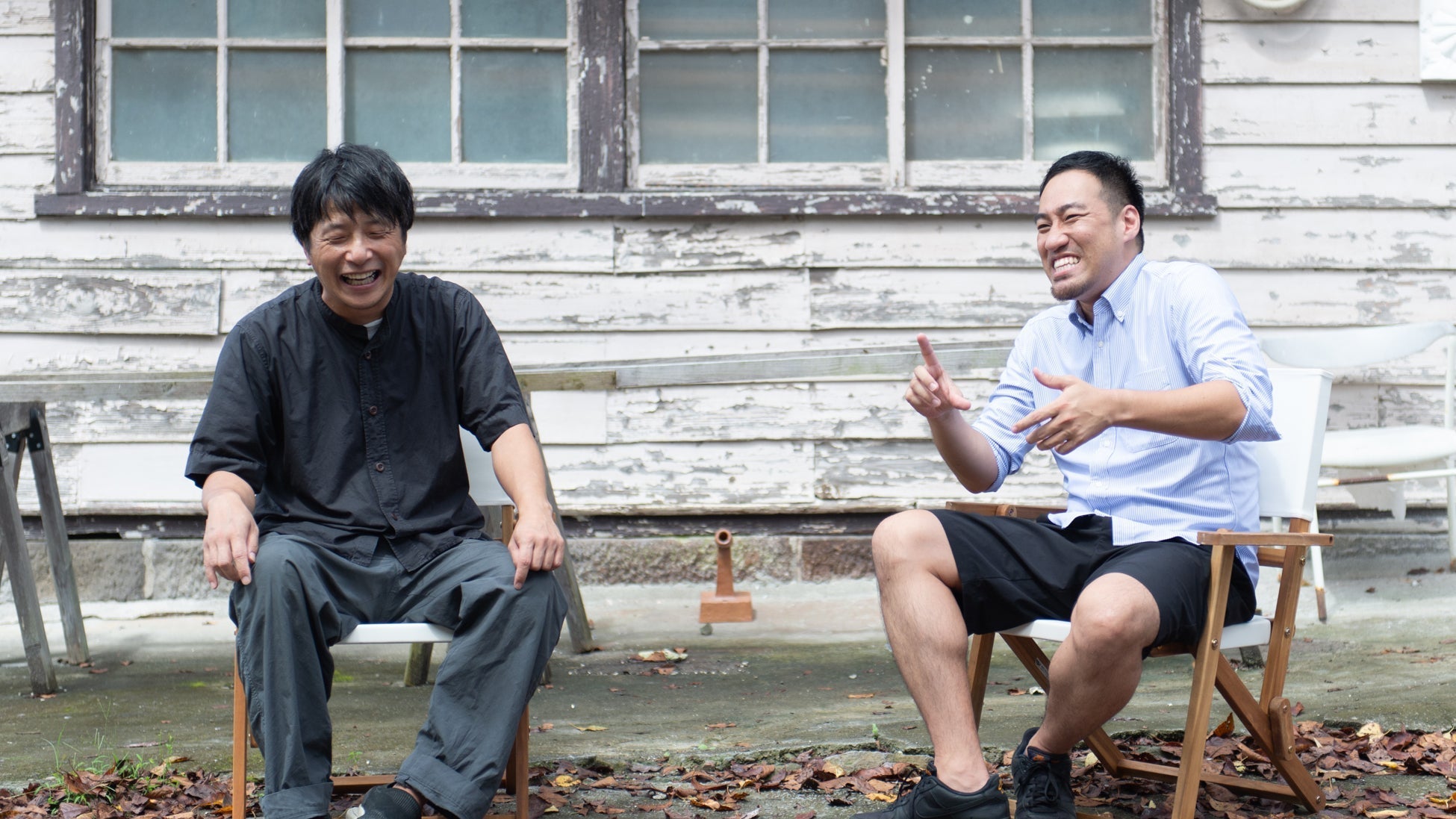
Reviving Usuki Ware: A Journey with Usami Hiroyuki
Written by Team MUSUBI
USUKIYAKI, gradually garnering attention, has brightened the spotlight through collaborations with celebrities, media appearances, and exhibitions at the pinnacle of global art showcases such as Art Basel, thereby emerging as a studio to watch. Beyond crafting Usuki ware, the institute also operates a hands-on workshop, gallery, a restaurant utilizing local ingredients, and a gift shop, all whilst uplifting and reviving an enchanting fragment of history.
Today, we delve into the mesmerizing world of Usuki ware through the lens of Usami Hiroyuki, representative of the USUKIYAKI Research Institute. By studying the limited documentation of the almost mythical Usuki ware, which was produced in this region for just a decade around 200 years ago, he ingeniously infuses modern essence into its recreation.
tables of contents
Reviving the Legendary Usuki Ware

Fusada (F): It is an absolute pleasure to be sitting with Usami-san today, the artisan and founder of the USUKIYAKI Research Institute. Usami-san, thank you for joining us. Could you start by sharing a little about your background and what shaped your journey into the world of pottery?
Usami (U): Thank you for having me, Fusada-san. I was born and raised in a family that ran a tourist center at the base of the Usuki Stone Buddhas, which are now recognized as National Treasures. My journey into pottery started formally at the Osaka University of Arts, where I majored in crafts and focused on pottery. After graduating and training under traditional craftspeople, I returned home to take over the family business, and in 2015, founded the USUKIYAKI Research Institute with colleagues, where we breathe new life into Usuki ware by unraveling scarce documents related to it and infusing modern essence into its creation.
F: Usuki ware, known as the "legendary vessel," was produced in this region only for about ten years, nearly 200 years ago. How does it feel to revive such a rare and legendary art form, and what challenges have you encountered in trying to breathe new life into this tradition?
U: Being born and raised in Usuki, establishing the USUKIYAKI Research Institute was a profound journey for me and my fellow ceramists in 2015, aiming to recreate a modern Usuki ware. Given that Usuki ware disappeared once during the Edo period, there were scarce resources to reference. We had to embark on various shape experiments and, while valuing creativity as artists, we also prioritized usability from the user's perspective because I have a keen interest in cooking.
Balancing Tradition and Modernity

F: Your commitment to balancing the artistic and practical use of USUKIYAKI is fascinating. How do you maintain the balance between traditional design elements and adding a contemporary touch to your creations?
U: Investigating Edo-period Usuki ware involved not only seeking scarce documentation but also engaging with individuals who owned the items and could offer various insights. In terms of design, while I believe we have inherited the non-extravagant aspects, not being flamboyant is crucial. It's essential to navigate the subtle space where the simple naturalness of USUKIYAKI, which is created in collaboration with nature, is evident without becoming monotonously uniform as we don't want to adopt a mass-production system.
Navigating the Future with Human Touch

F: USUKIYAKI, in its simple design, holds a rich, natural beauty. In the age of AI and technological advancements, how do you envision the future of your workshop while retaining the human touch in every piece?
U: Indeed, while AI proliferates, I think that humanity will eventually be expressible only through aspects like touch. Although aspects of the workshop could be made more efficient from a consultancy standpoint, we intentionally don't take it to that extent. Stability in production and establishing a system to steady the workshop are considerations, yet excessive systemization could render working dull, and decrease the motivation of our craftspeople. We prefer to keep exploring and challenging joyfully, valuing the intensive effort USUKIYAKI demands.
Comprehensive USUKIYAKI Experiences

F: Beyond production, the USUKIYAKI Research Institute is also actively involved in experiential workshops, galleries, and culinary adventures through a restaurant. Can you share the thought process behind creating such comprehensive experiences?
U: We operate not only in producing USUKIYAKI but also running interactive workshops, a gallery, a restaurant utilizing local ingredients, and a gift shop. While our gallery and restaurant were established to offer opportunities to use USUKIYAKI, originally, we only wholesaled, not selling on-site. But through workshops like "Kintsugi" (gold joinery), we hope to provide tourists with a reason to visit Usuki.

Aspirations and Invitation to Explore

F: As we wrap up our delightful conversation, could you share a bit about your future endeavors and aspirations for USUKIYAKI and your invitation to the readers?
U: To me, crafting is even more natural than breathing. If you don't love it, it won't translate to the customers. Moving forward, I want to challenge myself by using wood-fired kilns and creating something entirely different. Although we're currently operating in a division of labor system, my dream is to train young people here in all the processes, have them become independent, and create their own USUKIYAKI in Usuki city. Such eager youngsters have yet to arrive. I kindly invite everyone to come to Usuki city, immerse themselves in the rich experiences we offer and explore the possibilities of USUKIYAKI.







Leave a comment
This site is protected by hCaptcha and the hCaptcha Privacy Policy and Terms of Service apply.